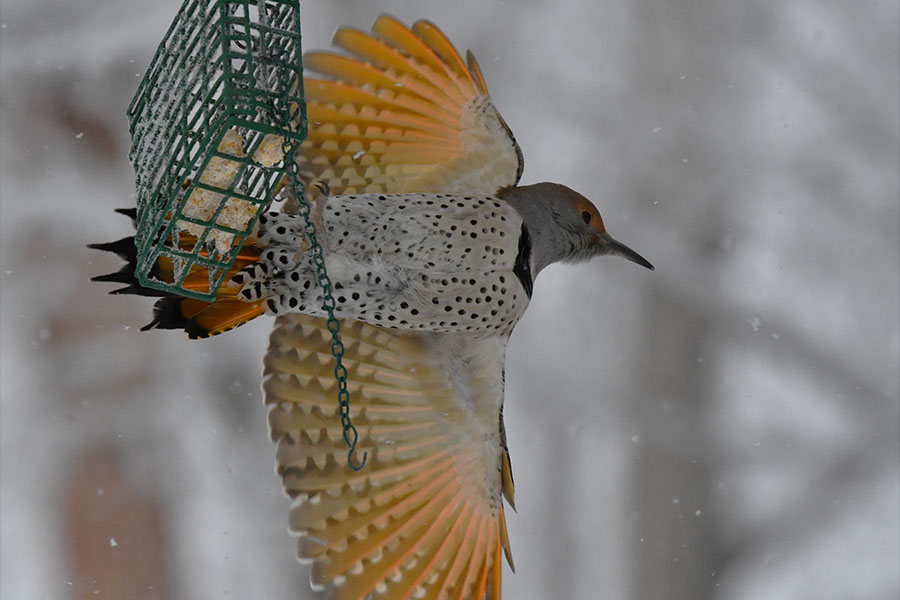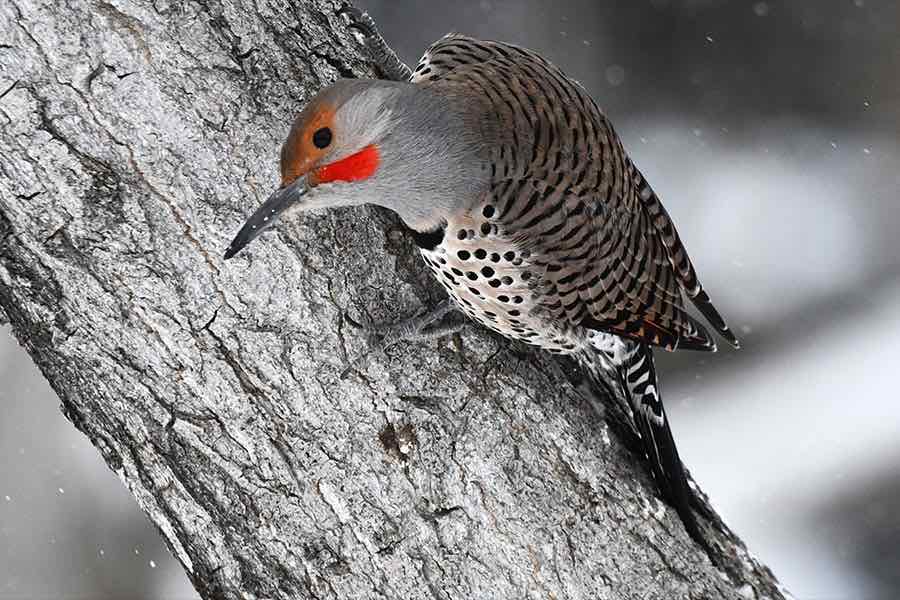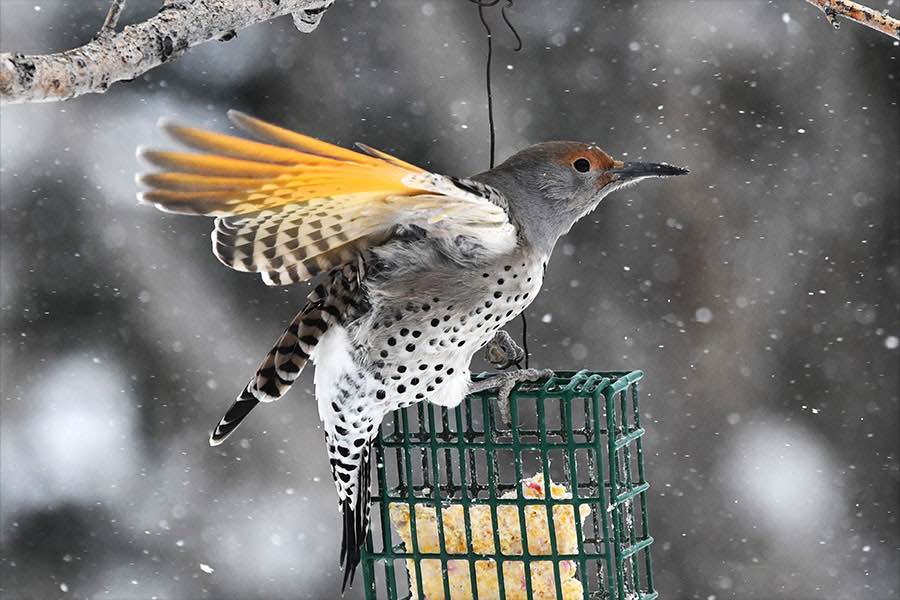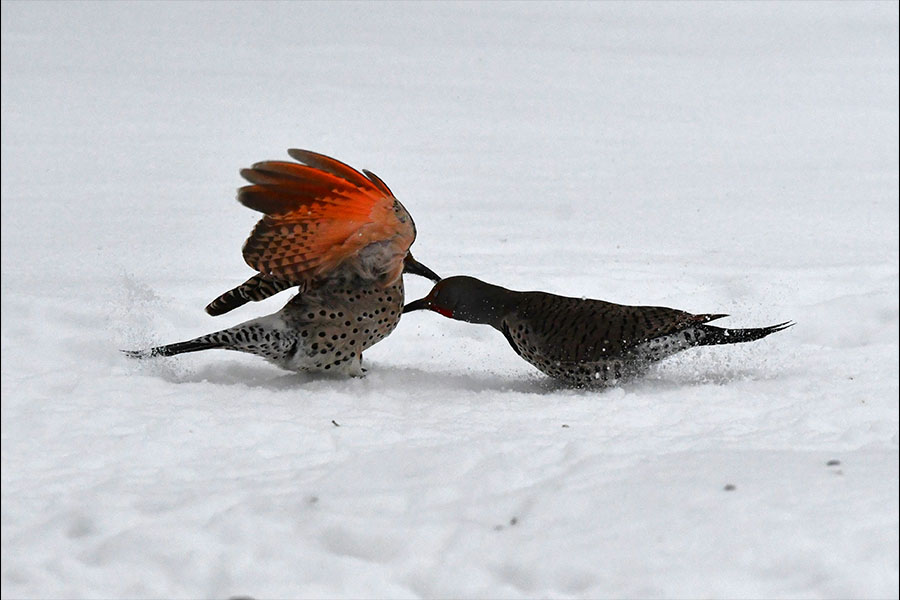Yellow-shafted flickers show up in Rexburg
Published at | Updated at
Six inches of snow last Sunday doubled the number of Northern flickers at my feeders from the usual eight to 16 on Monday. That number stayed consistent through the snowstorms and blizzards this week, with the highest numbers before 8 a.m. each morning.
Monday morning, while photographing the feeding frenzy at the six suet cakes hanging in my trees, I noticed one female with bright yellow tail feathers – all of them! A lifer for me, a Yellow-shafter Northern flicker. I had photographed and observed crosses of the Yellow- and Red-shafted flickers with a mixture of yellow and red feathers in their tails and wings, but never a full-blooded yellow one.
As I was spending most of my time tracking the yellow-colored female, I saw another one with yellow wings flush off another suet cake. Suddenly, I had two of them. I noticed they liked a certain suet cake set away from the others, so I moved it closer to my hiding place to get better pictures.

Once they were forced to feed with most of the other flickers, I found female Red-shafted flickers would chase the yellow ones off the feeders. As they were pushed off the feeders, they would show the color on the bottoms of their feathers.
Typically, Yellow-shafted flickers winter along the Pacific Coast, summer from Alaska through Canada, and in the northern United States from the Dakota to Maine. The Mountain States from Canada to Mexico hold the Red-shafted flickers. They were classified as two different species at one time, but now they are two of 11 subspecies in the Northern Flicker species.
Both females look very similar, but I find the Yellow-shafted females are lighter in color than the Red-shafted females. Males differ, with the Red-shafted having a “red mustache” instead of a black one on the yellow ones. Yellow ones have a red “chevron” on the back of their neck, while the red ones do not have one at all. A male cross between the two subspecies has a faint chevron and a light red or gray mustache. I am hoping for a male Yellow-shafted to show up so I can get some pictures of him.

During a snowstorm Thursday morning, most of the Red-shafted flickers moved to larger trees and hugged the trunks to get out of the blinding flying snow; a Yellow-shafted found an unoccupied food station. Due to the strong winds, it found it challenging to stay on the suet but was determined to get breakfast while the Red-shafted tried to protect themselves from the storm. By the time I had to leave, the Yellow-shafted had flown to a distant hybrid poplar to protect itself from the blowing snow.
I will not be surprised if the numbers continue to rise during this bitter-cold weekend. They certainly know how to let their buddies know where the food is.
It is also time for the Bald eagles to start gathering at Camas National Wildlife Refuge, and the bitter cold will encourage them to gather for the evenings out there. I will keep you informed. We are also expecting Ririe Reservoir to freeze over. Hopefully, we will find a few kokanee and trout there soon. We are hungry for some fish.

I would like to thank everyone who notified me where they have been seeing Pine grosbeaks and other strange birds. These birds appear in most communities in the Upper Snake River Valley. As this blizzard subsides, we may see a lot of changes during the predicted bitter cold. Keeping the feeders full will be critical for them if you are feeding birds.
Have a wonderful and safe week. Be kind and considerate to others, please.


Living the Wild Life is brought to you by The Healing Sanctuary.
Get News In Your Inbox